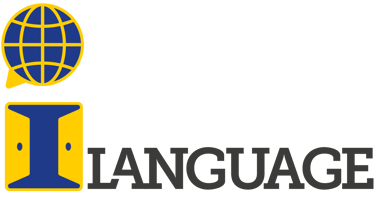Understanding the difference between iLanguage and eLanguage
A Guide for Parents Introduction: As parents, we often come across terms related to language acquisition and identity formation that may seem foreign to us. Two such terms are “iLanguage” and “eLanguage”. In this blog post, we aim to provide a clear understanding of these terms and explain the difference between them. Understanding these concepts can help us better support our children on their multilingual journey. So, let's dive in!
PARENTINGLANGUAGES ACQUISITIONFAMILYCHILDREN
iLanguage Team
8/11/20232 min read


iLanguage: An integral part of your child's identity. The term "iLanguage" comes from modern linguistics and was first introduced by Carola Koblitz in her research at the University of Vienna in 2017. The word "inherent" is derived from the Latin term "inhaerere," which means an essential element contained in and defining a being or object. In the context of language, an "iLanguage" refers to a language that is an integral part of your child's identity.
eLanguage: The language in the learning process. On the other hand, eLanguage comes from the Latin term extrinsecus, which means something external or outside a person or their identity. Consequently, an eLanguage refers to a language that is not yet part of your child's linguistic repertoire, but is being learned or acquired.
Understanding the Difference: The main difference between iLanguage and eLanguage lies in their relationship to children's identity. iLanguage represents a language that is already an integral part of who they are, while eLanguage represents a language that they are in the process of learning and integrating.
Practical implications for parents:
1. Nurturing iLanguage: Encourage and support your child to nurture and develop their family language(s). Provide opportunities for them to use their iLanguage in everyday interactions, such as talking with family members or reading books in that language.
2. Promote eLanguage acquisition: Support your child's efforts to learn new languages. Enroll them in language courses, provide language learning resources, and create a language-rich environment that exposes them to the target languages.
3. Promote multilingualism: Recognize and celebrate the diversity of your child's language repertoire, both iLanguage and eLanguage. Encourage them to embrace linguistic diversity and develop a positive attitude towards language learning.
Conclusion: Understanding the difference between iLanguage and eLanguage is essential for parents who want to support their children's language development and identity formation. While iLanguage represents the languages that are already part of their identity, eLanguage represents the languages they are actively learning. By promoting their family language(s) and supporting the acquisition of new languages, we can empower our children to embrace multilingualism and thrive in a diverse world.
Remember that both iLanguage and eLanguage play an important role in shaping your child's language journey and self-expression. Embrace their linguistic diversity and provide them with a nurturing environment that welcomes their multilingualism.
We'll read each other soon! 😉


